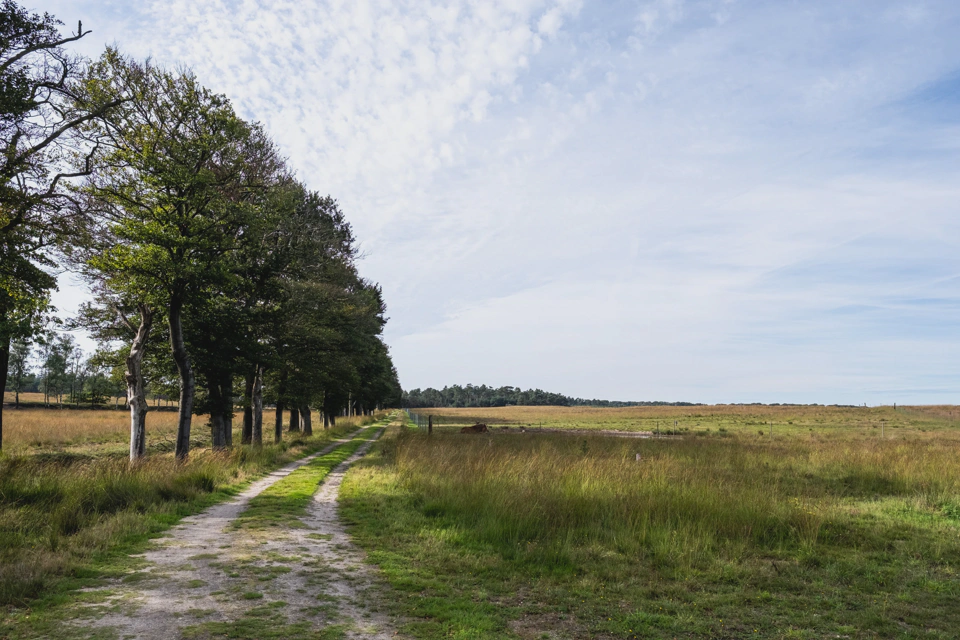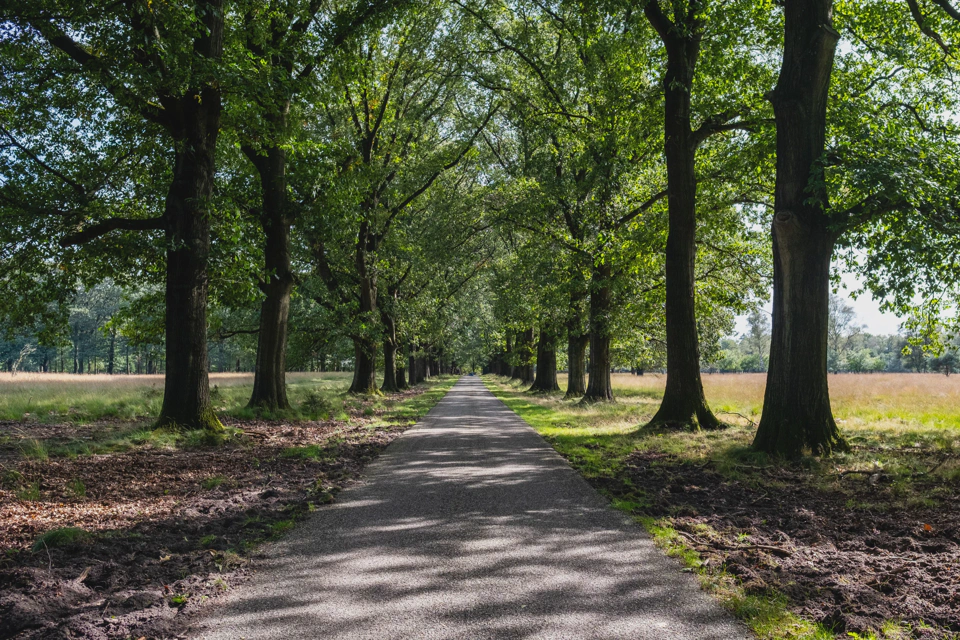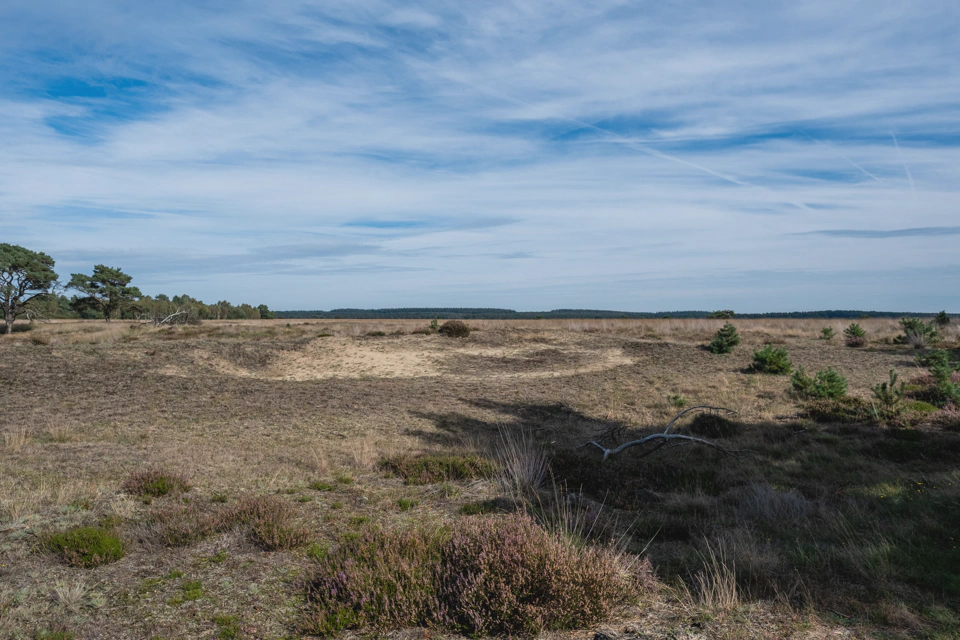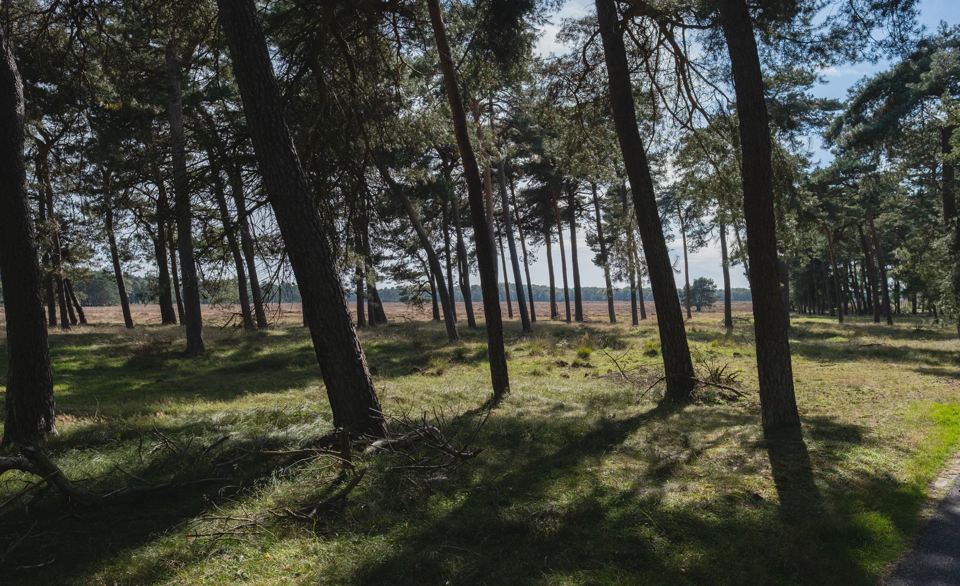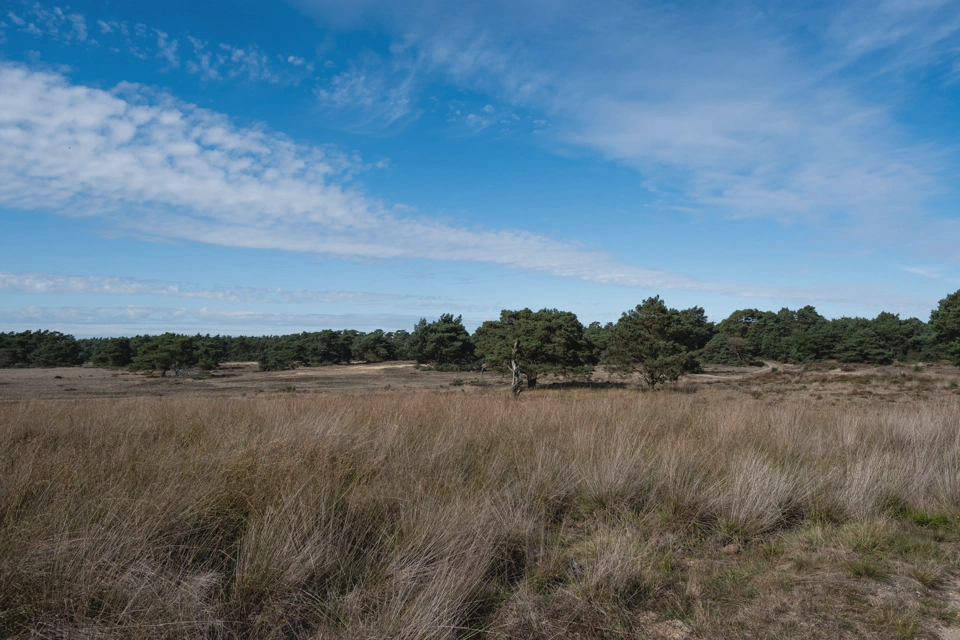Today we rode our bikes over 23km of trails in the National Park Hoge Veluwe (“the high Veluwe” 1) near the Eastern city of Arnhem. The privately owned park was founded in 1935 and is about 54km2 of heathland, drift sands, peat bogs, and woodland: one moment you’re biking under the shadows of tall birches and oaks, and the next you’re staring over heathland that disappears into the horizon.
The park is also home to seven wolves, the first two of which entered the park in 2020 during COVID, and the other five are their offstring. Until the wolves arrived, the park was also home to hundreds of mouflons, which were introduced by accident around 100 years ago. After people saw the increase in biodiversity that they caused, they brought in more. The problem now is that the wolves have killed all the mouflons except for the few that have been kept in an enclosed area. The park won’t kill the wolves because they’re an endangered species. To make things messier, the park suspects that the wolves were introduced maliciously because they couldn’t find evidence wolves had got in by themselves by digging holes or jumping over two meter high fences.
When I asked why they don’t just shoot tranquilizers at the wolves and take them out, I was told that the endangered species law doesn’t allow that. It doesn’t make sense to me. I also don’t understand why they can’t lure the wolves out if there are no more moufflons left. You may not touch the wolves, but surely you can leave the park doors open, and lure with a caged mouflon outside, right? Before the wolves came in, the mouflons’s natural predator were the park rangers who killed many of them (“culling” sounds better) yearly to keep their numbers within some range.
The mouflons weren’t in the Netherlands before people brought them in, the wolves were. If the park values “letting nature do its thing”, they should act coherently, even if it means reducing biodiversity. If it were up to me, I would choose biodiversity any day given the rate at which we are destroying it elsewhere on the planet (since 1970, animal populations have declined by about 70%.)
Around noon we stopped at a natural museum in the middle of the park where I learned interesting facts like the effects that different tree barks have on insects, the kind of prehistoric animals that used to live up here including rhinoceros, hippos, and mammoths, and how underground water systems work. The prehistoric animals section had skulls that tried to highlight how big these animals were. The museum also explained how heathlands were being overtaken by woodland after they introduced mouflons into the park, how the grazing impacted the habitat, etc. I find biology and the dynamics of ecosystems fascinating.
Even though it was Monday, we came across other people constantly: elderly couples on electric and non-electric bikes passing us all the time, tourists of various sizes, photographers with big lenses, and road bikers. If I lived in the area I would definitely get a year pass.
It was one of the most memorable bike rides I’ve done. I’ve never been to a park that looked like this.
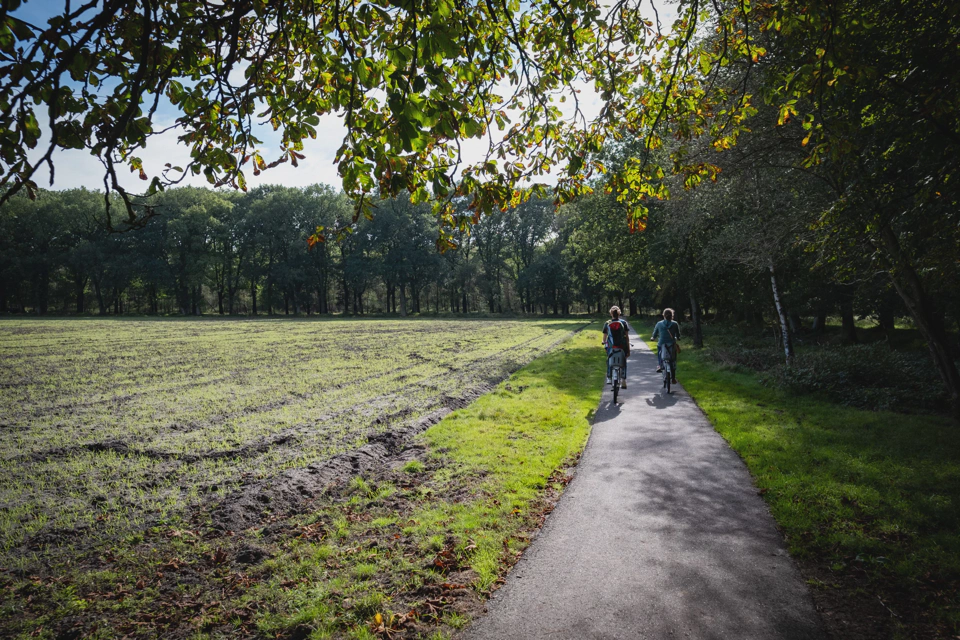
Veluwe is the name of the moraine or glacial till that covers the whole area. ↩︎
